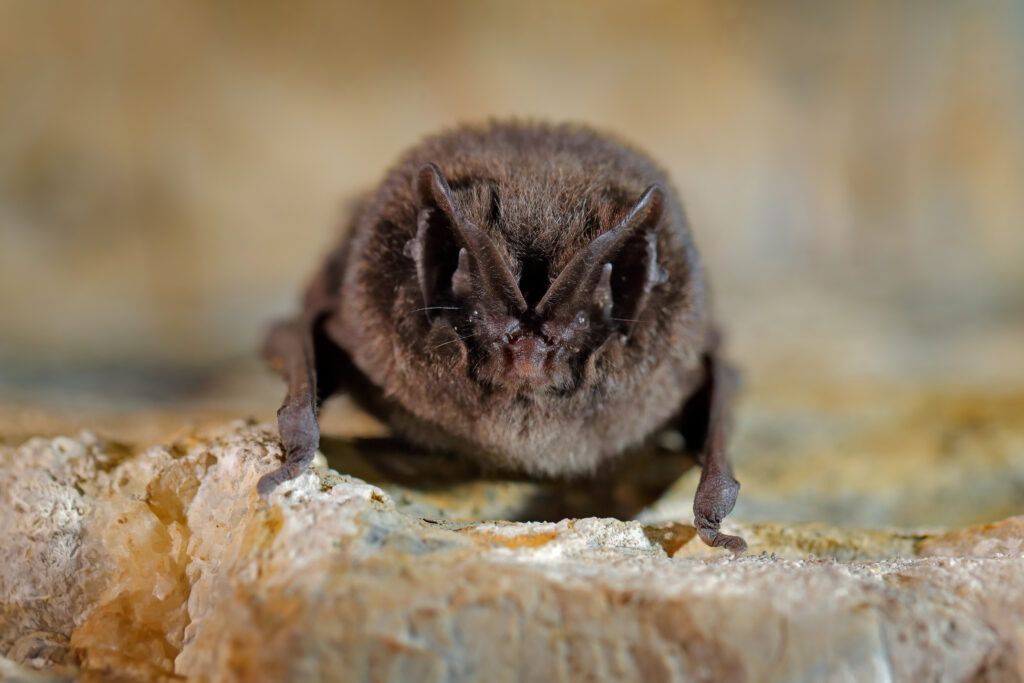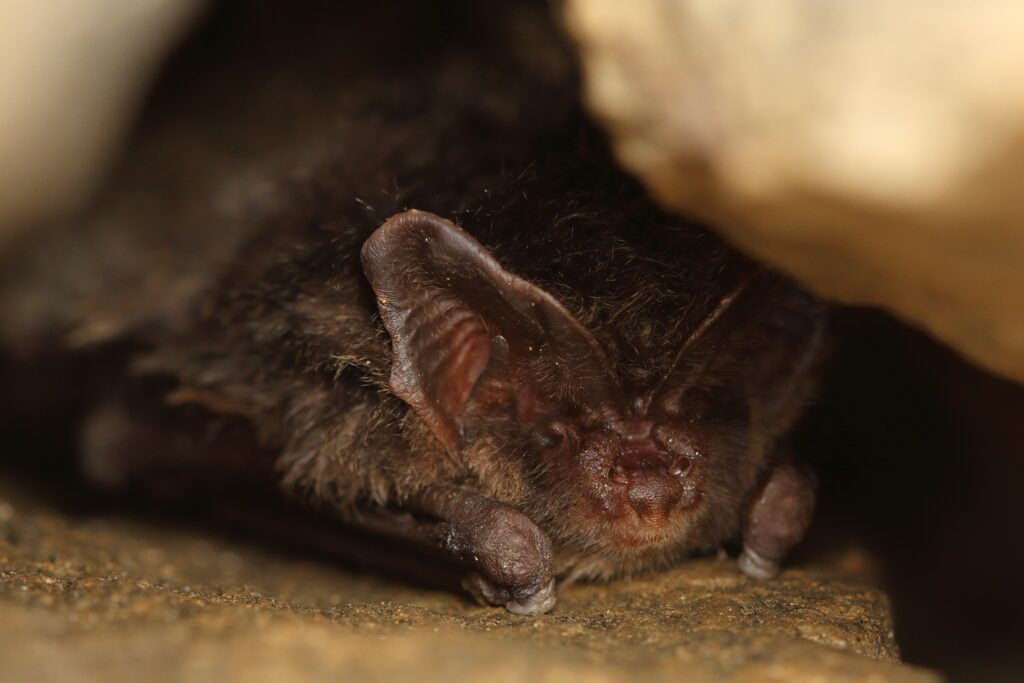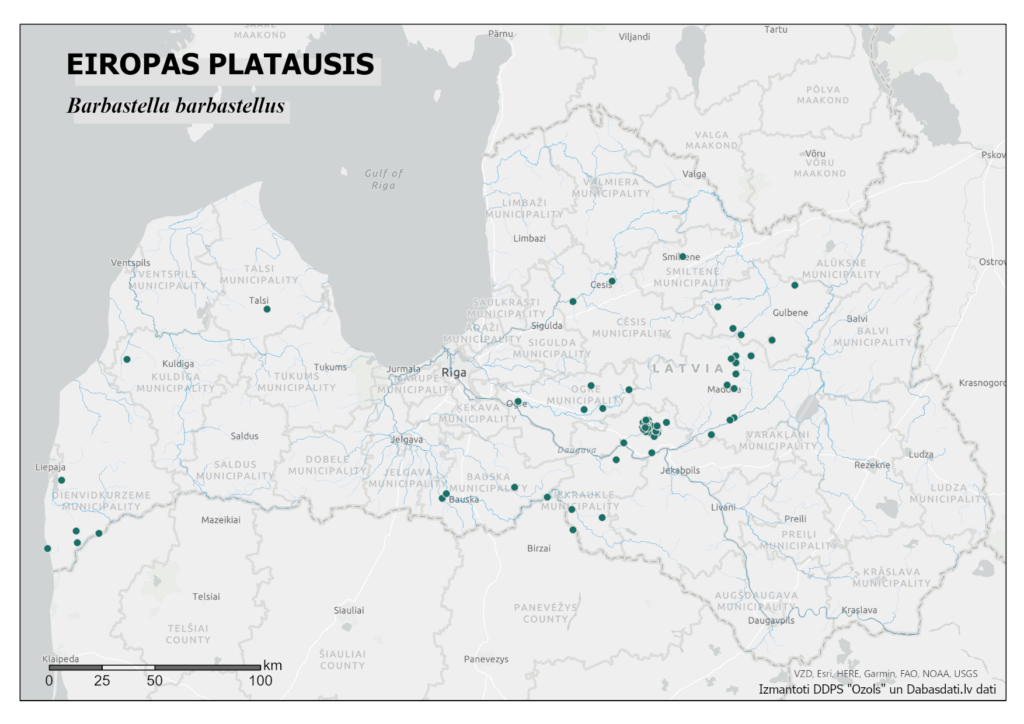Protected species of the month - Barbastelle Bat
As November draws to a close, with most bats entering their winter hibernation, we want to share more about a protected bat species found in Latvia - the Barbastelle Bat (Barbastella barbastellus).

The Barbastelle Bat is a medium-sized bat, measuring 43-64 mm in body length. It is characterized by dark brown fur, sometimes adorned with grey or even yellowish tips on the back. Its skin color is dark brown. A distinctive feature, aligned with its Latvian name, is its broad, triangular ears that are joined at the forehead. The ear tip is triangular with a pointed, slightly extended tip.
It's typical for the females of this species to give birth to one offspring per year. The lifespan of the bat varies in different sources, but on average, it ranges from 5.5 to 10 years. The maximum known age for a member of this species is 22 years.
The Barbastelle Bat is a wintering species in Latvia, not known for long migrations. It hibernates mainly in old and less-used cellars. This bat is a distinct forest species, traditionally associated with broadleaf forests. In Latvia, suitable old broadleaf forests are scarce, but the species is registered in old manor parks and various types of forest plantations.

It is important to note that bats do not nest but roost in caves, tree hollows, as well as in attics and cellars of buildings. Unfortunately, the renovation and demolition of old buildings often threaten bats, as they reduce the number of suitable daytime hideouts and breeding sites. Additionally, the cutting down of old, hollow trees is harmful to bats. Another risk factor is the decline in insects, which threatens bats' ability to find enough food.
In Latvia, the main threat to the species is forestry, which reduces the number of old and decaying or dead trees with suitable hideouts, fragments forest areas, and alters the moisture regime due to drainage.
The availability of suitable hiding places in forests is one of the determining factors for the presence of this species in Latvia. This bat's roosts are less commonly found in buildings. They hibernate in underground roosts, with known hibernation sites in various old cellars in Latvia.
The European barbastelle preys on night-flying moths, though it can hunt other insects as well.

The Barbastelle Bat has been observed three times in hibernation sites in the caves of Gauja National Park, but no individual of this species has been recorded in the park's territory in the last 30 years. Current known findings in protected areas are only in the “Dunika” nature reserve and the “Ogres ieleja” and “Talsu pauguraine” nature parks.
If you spot a Barbastelle Bat in nature or in your home's cellar, report the observation to the Nature Conservation Agency or on the Dabasdati.lv portal. We welcome news and photographs of species observations on our Facebook page as well. Remember, when encountering bats, do not disturb their rest and avoid making any lound sounds or turning on bright lights, such as camera flash.
